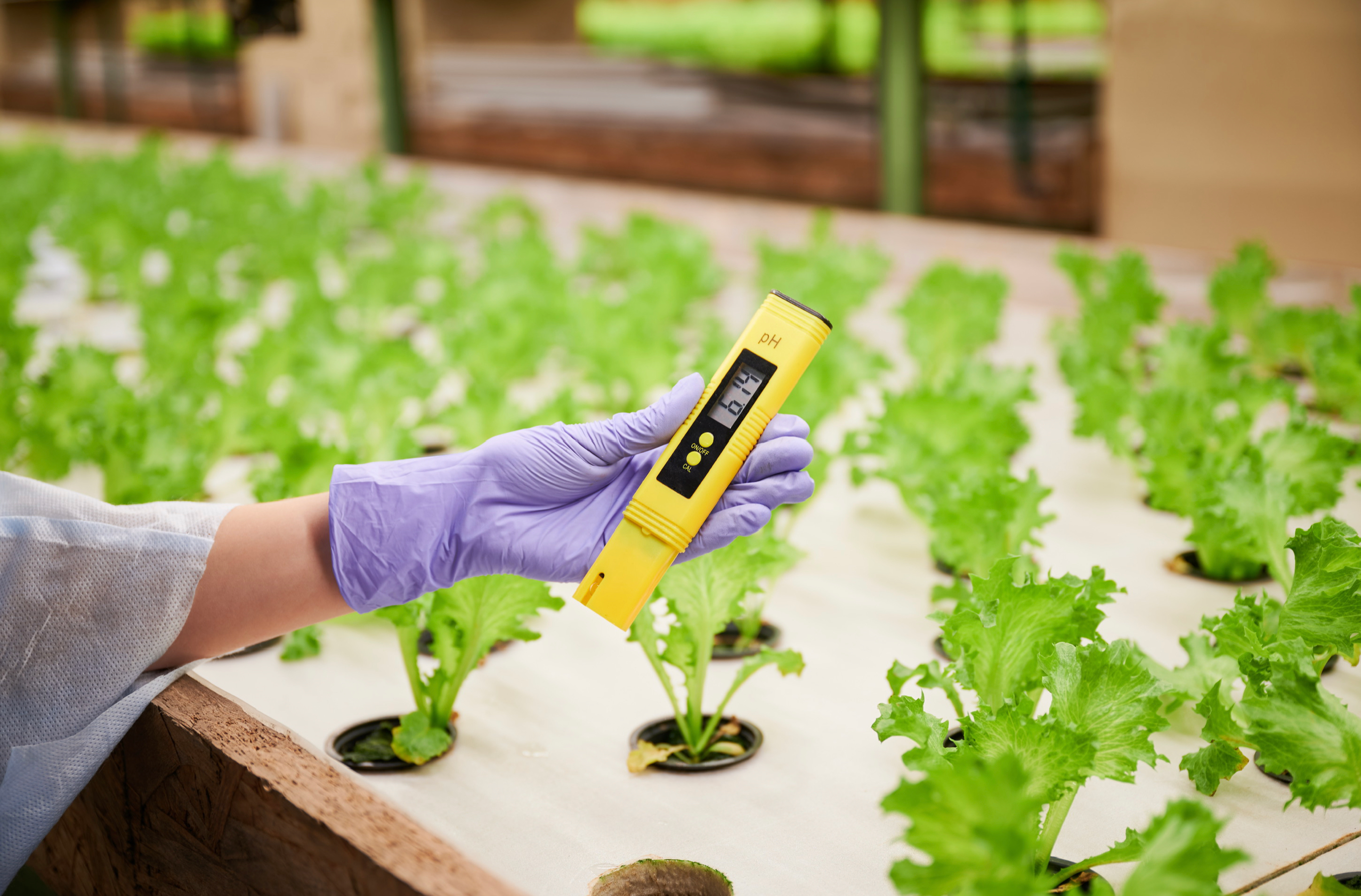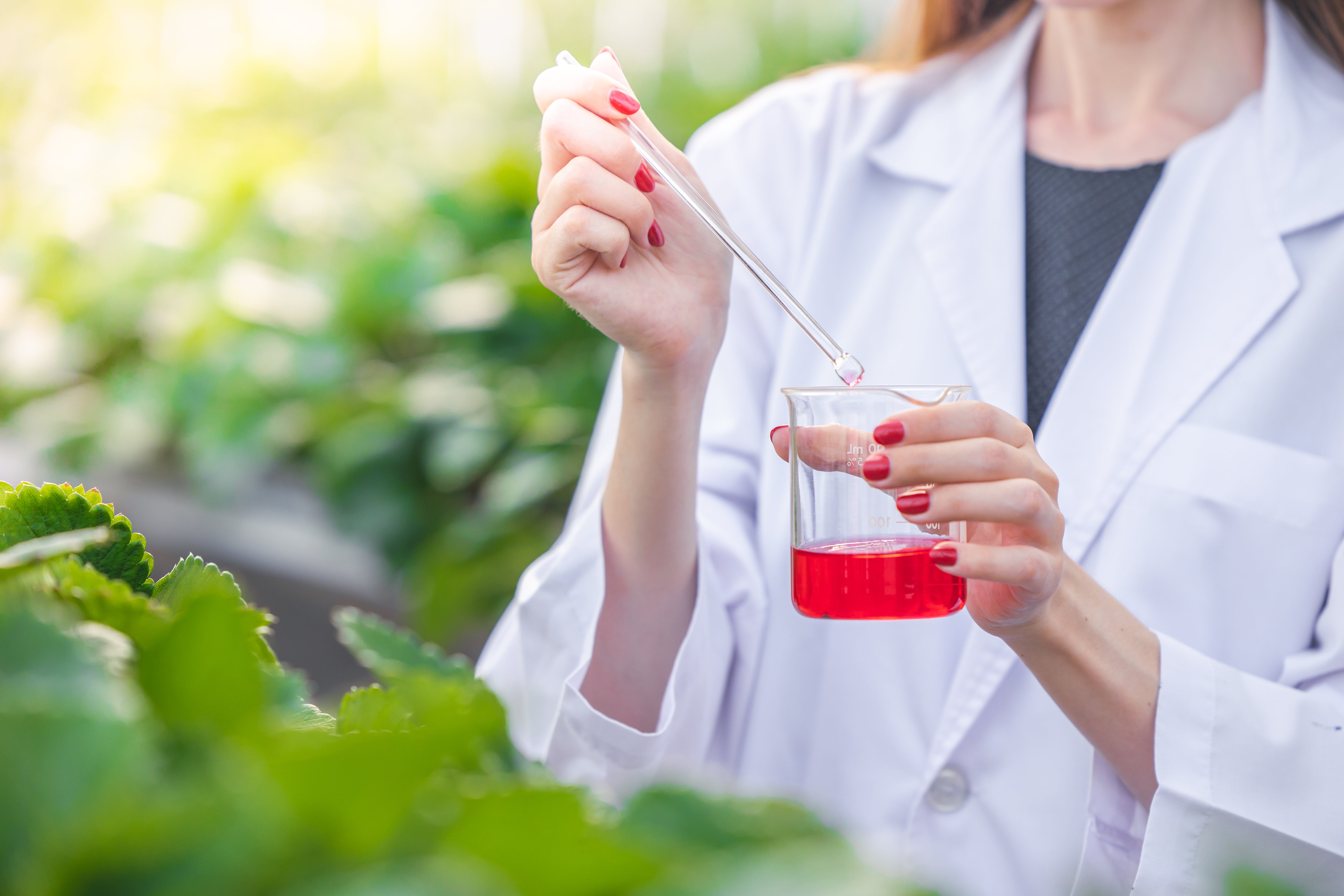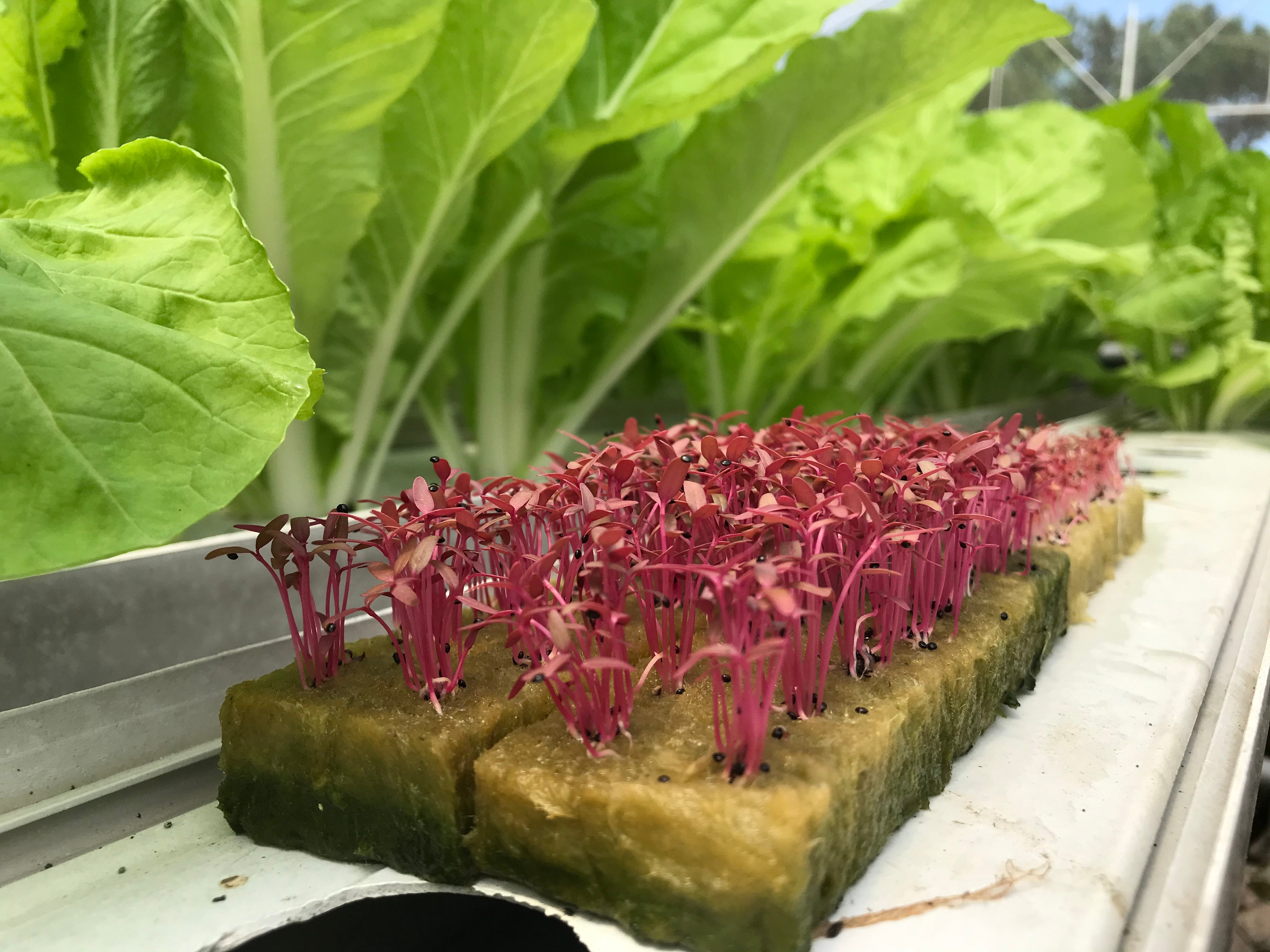Nutrient Deficiencies in Hydroponics
Dealing with Nutrient Deficiencies in Hydroponics
Nutrient deficiencies should be fairly rare if you are using a nutrient solution from a reputable brand. There are many variables that could cause your plants to be deficient in nutrients or have too many nutrients, which leads to toxicity. These can include the pH level of your nutrient solution, how fast your plants grow, how concentrated your nutrient solution is, user error, and many others. If your nutrient solution has an excessive amount of a particular nutrient, it can mean that it will be difficult for your plants to absorb other nutrients. Things that you can do to reduce this include being super careful to follow all the instructions when you make up your nutrient solution to ensure it is mixed up correctly.
If you live in a hard water area, then this isn’t ideal, and it would be preferable instead to dilute your hard water with distilled water or use water that has been put through a reverse osmosis filter or an activated carbon filter, which would lessen the number of solids in hard water.
Signs of Nutrient Deficiencies
Nitrogen
Nitrogen is one of the most important macronutrients needed for plant growth, so a deficiency in nitrogen can ravage your plants. Plants that are lacking in nitrogen can’t produce chlorophyll as easily, meaning that their leaves will begin to lose their green colouration—this is known as chlorosis. The loss of colour usually begins at the lower, older leaves and makes its way up to the new growth. Nitrogen deficiency will also stunt the growth of your plants, and you may notice a slight purple tint on stems and the undersides of leaves.
Phosphorus
A phosphorus deficiency can be difficult to detect early on. Leaves may turn dark green, and the plant may not grow large. Phosphorus affects the cell structure of your plants, so a phosphorus deficiency means weaker plant growth. Plants that are deficient in phosphorus can also have small roots, very small flowers, and leaves that have a red or purple appearance. However, these signs do not necessarily mean that there is a lack of phosphorus in the nutrient solution. This can happen due to nutrient solution being too cold, which may decrease nutrient uptake.
Potassium
Plants with a potassium deficiency become vulnerable to many things that they’d otherwise be able to combat—this is somewhat similar to immunodeficiency in humans. The tips of the plants’ leaves may scorch from the light. Plants deficient in potassium can also experience chlorosis between their leaf veins on lower leaves. They may also develop brown, dead spots. These signs typically show on the older leaves first. The fruit and flowers of a potassium-deficient plant may also be lighter in weight than normal. Severe potassium deficiency can lead to parts of plants dying, which is known as necrosis. Necrosis can look like dead spots or dying leaf tips and cause wilting.
Magnesium
Plants deficient in magnesium will have yellowing around leaf edges. The worse the deficiency, the yellower the edges, and the more of the leaf will be affected. This is most commonly seen in tomato plants.
If you are using coco coir as a growing medium, this means you’re more likely to experience magnesium and calcium deficiencies because coco coir binds with magnesium and calcium. Some coco coir mediums are pre-charged with magnesium and calcium, so make sure to read the label and determine whether or not the manufacturer enriched their product with minerals. If your coco coir is not pre-charged, you can add a calcium-magnesium supplement to your nutrient solution to make sure your plants won’t be deficient in these nutrients.
Sulfur
If your plants are deficient in sulfur, all their leaves can turn yellow, starting with the youngest leaves. The leaves will then curl inwards.
Calcium
A calcium deficiency usually affects the newer leaves before it will affect the older leaves. These leaves usually have dead spots and may look mangled and very small in size. It can also lead to blossom end rot, where the bottom of otherwise healthy-appearing fruits looks brown and rotten, but this happens extremely rarely in hydroponics. If you’re using coco coir as a growing medium, make sure it is pre-charged with calcium and magnesium. If it’s not, you can add a calcium-magnesium supplement to your nutrient solution.
Iron
If plants are deficient in iron, they will have yellowing on their younger leaves. In more severe cases, the leaves will become extremely pale or almost white. Like with a phosphorous deficiency, an iron deficiency may be the result of nutrient solution being too cold rather than any actual deficiency in the solution. Consistently checking your pH levels can help you prevent a serious iron deficiency. If you notice yellowing leaves on the most recent growth and your nutrient solution pH level is higher than 7, this can mean your plants have an iron deficiency. Plants can’t absorb iron if the pH level is too high.
Manganese
Signs of a manganese deficiency are similar to an iron deficiency, except it may affect the older leaves first rather than the younger leaves. If your plants are deficient in manganese, the leaves will begin to turn yellow, starting with the topmost leaves. Manganese and iron are both available at similar pH levels, so many hydroponic growers often confuse an iron deficiency with a manganese deficiency.
Boron
Plants don’t need a lot of boron, but the effects of a boron deficiency can be severe. It can lead to stems and roots dying and rotting, inviting diseases or fungi. Leaves may wither, grow thicker, or develop necrotic spots, and fruit can become deformed.
Zinc
Signs of a zinc deficiency include stunted or deformed leaves, chlorosis, necrotic spots, and leaves with wavy outlines, and you would typically notice them on younger growth.
Copper
If plants are deficient in copper, you’ll notice younger leaves become darker green in color and twist up. They won’t grow as big, and the leaves may develop necrotic spots.
Molybdenum
Plants deficient in molybdenum can suffer from chlorosis on older leaves first before it moves up to the entire plant. Another sign is the edges of the leaves darkening and curling. New growth will come in extremely twisted and won’t live very long.

Signs of Nutrient Toxicity
Nutrient toxicity is the opposite of nutrient deficiency—this is when your nutrient solution is oversaturated with nutrients. It shouldn’t happen if you’re careful when you’re mixing up your nutrient solution, but mistakes can happen.
Signs of nutrient toxicity are similar to those of nutrient deficiencies. Checking your EC level can help determine whether you have nutrient toxicity. It should be between 1.5 and 2.5 mS/cm, and higher EC levels can mean that you need to dilute your nutrient solution with water.
Dealing with Nutrient Deficiencies
If your nutrient solution does not contain enough nutrients and is too diluted, then your hydroponic plants won’t grow as well as they should. Equally, if your nutrient solution has too many nutrients, then it can create a toxic environment, which is bad for your plants. Because different plants absorb nutrients differently, your nutrient solution can change dramatically over the course of a day. It can change depending on how fast your plants grow and the temperature of the room.
Make sure to measure your pH and EC levels regularly. The pH level of your nutrient solution should be between 5.5 and 6.5, and the EC level should be between 1.5 and 2.5 mS/cm. If your pH is outside the recommended range, this can prevent your plants from absorbing nutrients. If your EC level is too low, this means your nutrient solution is too weak. It is possible to adjust the solution slightly, but you do need to be certain you know what you are doing.
If your plants look like they may have nutrient deficiencies or showing signs of toxicity, then it can be a good plan to get rid of the nutrient solution, flush out the system, and make a new nutrient solution. If you are new to hydroponic gardening, this is definitely what I’d suggest you do. If you have a lot of experience, you may have the knowledge of how to adjust things, but for most people, I’d suggest flushing the system and putting in a fresh solution.
Low nutrients can often be caused by salt build up, and this can stunt the growth of your plants and mean that their yield will be quite low. Other signs of salt buildup include declining growth rates, browning of leaf tips, dead leaf tips, leaf drop of lower leaves, wilting, and/or stunted growth. If you think there is salt buildup in your system, you can flush it with water to remove excess salts. Drain the nutrient solution from the reservoir, and fill it with filtered or distilled water. Then start your system, and run it for a few hours. Maintaining a continuous and steady flow is best. This flow will leach salts from the growing medium and roots of your plants as it flows through the system.
Don’t Use Hard Water for Hydroponic Gardening
If you live in a hard water area, this means there will be a lot of dissolved solids in your water, and this will have a serious impact on your nutrient solution. You can measure the TDS (total dissolved solids) level of your water using an EC, PPM, or TDS meter. Most EC/PPM meters can change modes, so check if yours can be set to TDS or PPM 500 scale to measure TDS of water. If your water TDS level is below 200 ppm (parts per million), then you can most likely use that without too many issues, but ideally, it should be below 120 ppm. You can dissolve tap water with distilled water to bring its TDS level down. You can also buy activated carbon filters, which will reduce minerals. Or you can buy a more expensive reverse osmosis filter, and this will filter out pretty much all of the minerals in the water.
For more great content check out the Proponics YouTube channel below!

By Max Barnes
Max Barnes is a long-time homesteader and author. Max grows the majority of his own food year-round using a variety of different methods, including hydroponics. Hydroponic gardening plays a huge part in his homestead and self-sufficiency goals.




